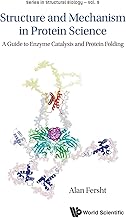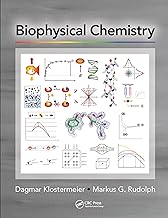Summary of "Biophysical Chemistry 2018 - Lecture 4"
Summary of “Biophysical Chemistry 2018 - Lecture 4”
This lecture covers foundational and advanced concepts in biophysical chemistry, focusing on protein structure, thermodynamics, and molecular interactions. The instructor blends theoretical explanations with practical examples, emphasizing the importance of free energy, entropy, and enthalpy in understanding protein folding and secondary structure formation. The lecture also discusses scientific methodology and historical scientific errors to illustrate how science progresses.
Main Ideas and Concepts
1. Course and Administrative Notes
- Continuation from previous lectures with a focus on biology, free energy, and protein structures.
- Introduction of a new Canvas website for course materials and potential quizzes.
- Clarification on lab report deadlines and recommendations for timely submission.
- Encouragement to work on labs promptly to stay in sync with lectures and breaks.
2. Thermodynamics and Free Energy
Helmholtz vs Gibbs Free Energy - Helmholtz free energy (A) applies when volume is constant and no mechanical work is exchanged. - Gibbs free energy (G) applies when pressure is constant and mechanical work can be exchanged. - For proteins in aqueous environments, Gibbs free energy is more relevant due to negligible volume changes.
Energy Barriers - Relevant barriers are those comparable to or within a factor of ~5 of (k_B T) (thermal energy). - Barriers much smaller than (k_B T) are irrelevant (always crossed). - Barriers much larger than (k_B T) are effectively insurmountable. - Examples: Hydrogen bonds (~5-10 kcal/mol) are relevant; electrostatic repulsions (~100 kcal/mol) are usually prohibitive.
Free Energy and Kinetics - Free energy difference determines if a process is thermodynamically favorable. - The rate of crossing energy barriers depends on the height of the barrier (kinetics). - Processes proceed downhill in free energy spontaneously.
3. Molecular Interactions and Protein Folding
Hydrogen Bonds - In vacuum, hydrogen bonds lower energy significantly. - In water, net energy change is near zero because water compensates by forming hydrogen bonds with itself. - The hydrophobic effect arises mainly from entropy changes due to water structuring (clathrate-like cages) around nonpolar molecules.
Lennard-Jones and Van der Waals Interactions - Weak individually but significant collectively. - Repulsion prevents atomic overlap; attraction is weak dispersion forces.
Dielectric Constant ((\epsilon)) - Water has a high dielectric constant (~80) due to molecular rotation. - Proteins have much lower (\epsilon) (~2-5), leading to stronger electrostatic interactions inside proteins.
Charged and Titratable Amino Acids - Charged residues (Arg, Lys, Glu, Asp, His) have pKa values that determine protonation states. - Protonation states can shift inside proteins (pKa shifts), affecting protein stability and function. - Charged residues are rarely buried inside proteins due to unfavorable free energy.
Protein Folding Landscape - Folding involves navigating an energy landscape balancing enthalpy (energy) and entropy. - The molten globule is an intermediate state with some secondary structure but high flexibility. - Folding pathways involve overcoming energy barriers and finding the native state.
4. Protein Secondary Structure
Alpha Helices - Characterized by local hydrogen bonding (i to i+4). - Formation causes a large entropy loss but compensates by hydrogen bond formation. - Proline disrupts helices due to steric hindrance and lack of hydrogen on nitrogen. - Glycine disfavors helices due to high entropy in unfolded state. - Helices have a net dipole moment due to aligned peptide bond dipoles. - Charged residues often cap helices to stabilize dipoles. - Helices can undergo conformational changes (e.g., 3_10 helix) for functional reasons.
Beta Sheets - Formed by hydrogen bonds between strands (non-local). - Side chains alternate above and below the sheet plane. - Can be parallel or antiparallel; antiparallel sheets have stronger hydrogen bonding. - Sheets are slightly twisted, not perfectly planar. - Formation has a higher initiation barrier than helices but is highly stabilizing.
Turns and Loops - Short turns (2 residues) connect secondary structures efficiently. - Glycine and proline are common in turns due to flexibility and conformational constraints. - Turns often occur on protein surfaces with polar residues to interact with water.
5. Experimental and Computational Methods
Circular Dichroism (CD) Spectroscopy - Rapid method to estimate secondary structure content. - Measures differential absorption of left- and right-circularly polarized light by chiral molecules. - Useful for monitoring folding/unfolding and secondary structure changes.
Additional Notes
- The lecture also highlights the scientific method and the role of historical scientific errors in advancing knowledge.
- Emphasis is placed on integrating thermodynamics with molecular biology to understand protein behavior.
Category
Educational
Share this summary
Featured Products



